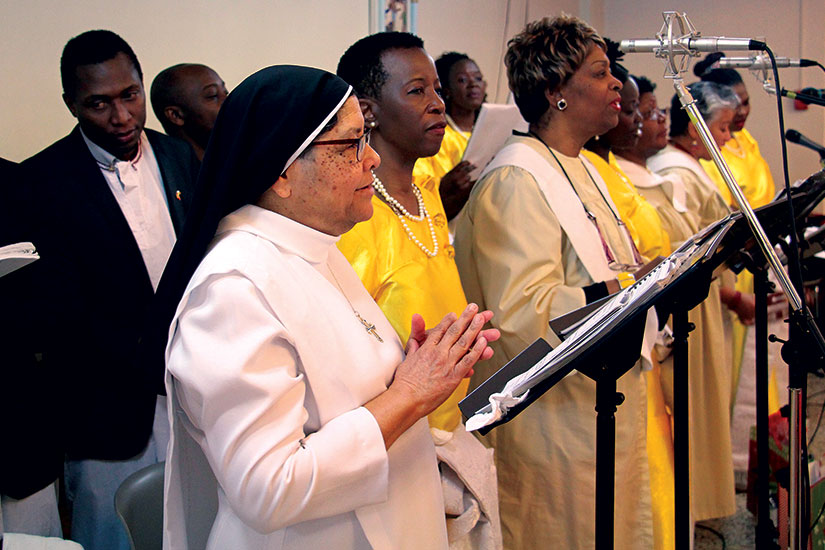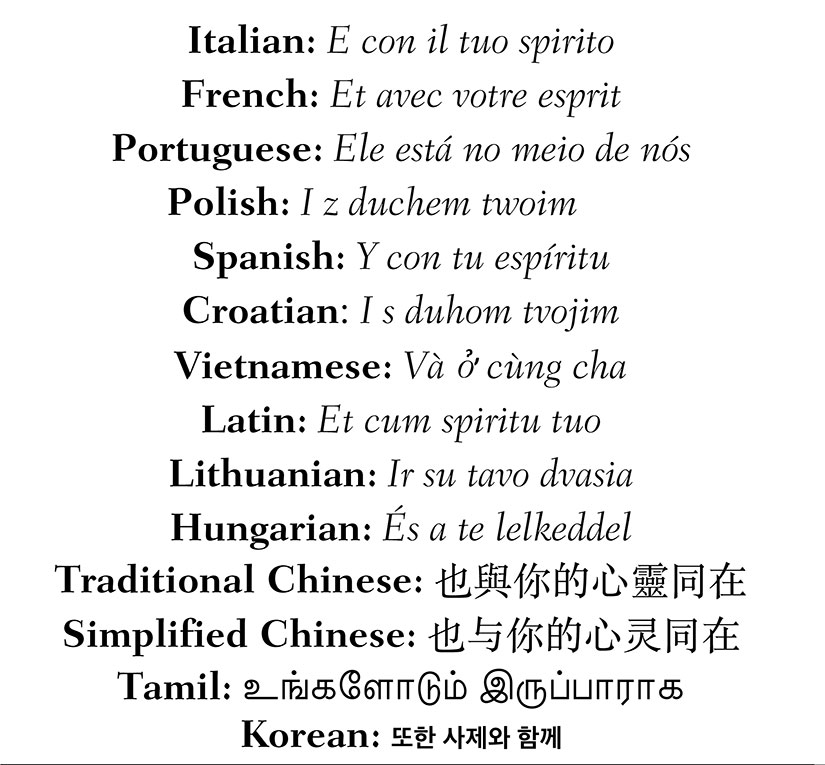“W imię Ojca i Syna i Ducha Świętego,” Fr. Janusz Blazejak OMI intones as he makes the Sign of the Cross. The Polish-speaking congregation responds in unison, “Amen.”
At St. Maximilian Kolbe Parish in Mississauga, this scene occurs eight times every weekend — six times in Polish and twice in English. These liturgies would have been inconceivable when the Diocese of Toronto was established, and not just because present-day Mississauga was mostly farmland in the mid-19th century or because Latin was the language of the Church. Like Toronto itself, the local church lacked the multicultural character it exhibits today.
The population of Upper Canada was 455,000 in 1841, when the Diocese of Toronto was partitioned from the Diocese of Kingston. Catholics represented just 14 per cent of that total. That number sharply rose in the ensuing decade, as Irish immigration transformed the region and, with it, the Church. A quarter of Toronto’s population was Irish Catholic by 1851.
Immigration has been the story for much of Toronto’s history. As immigration trends shifted, so to did the ethnic makeup of the diocese. The region welcomed waves of migration from Italy in the early 1900s, Portugal in the 1950s, and Vietnam in the 1970s. Throughout these decades and into today, the diocese has welcomed Catholics from almost all corners of the planet.
That welcome now includes an option for many new arrivals to attend a Sunday Mass celebrated in their native tongue. The Archdiocese of Toronto web site directs people to churches that offer Sunday Mass in one of 33 different languages. After English, the most popular of these are Italian, Portuguese, Spanish, Polish and Korean, but a sample of other languages on offer includes: Arabic, Cantonese, Croatian, Haitian, Igbo, Japanese, Latin, Lithuanian, Maltese, Mandarin, Tagalog, Twi and Vietnamese.
This diversity came about because, as Toronto’s immigrant population grew, the bishops realized that a one-size-fits-all approach to ministry would not meet the pastoral needs of all the faithful. Archbishop Philip Pocock, who led the archdiocese from 1971 to 1978, established an Italian Pastoral Commission in recognition of this new reality. It became the forerunner of today’s Ethnic Pastoral Councils, which consist of priests who respectively serve the Chinese, Filipino, Hispanic, Italian, Polish, Portuguese and Vietnamese communities. An auxiliary bishop serves as vicar for all seven councils.
“The councils can help newcomers integrate into Canadian society,” said Fr. Joseph Tap Tran, chair of the Vietnamese Ethnic Pastoral Council and pastor of St. Cecilia and Vietnamese Martyrs parishes. “But at the same time, they can help the Vietnamese people share their values. Their contributions can enrich our archdiocese, our city and our country.”
 The beat of the steel pan rings out at Sunday services at Toronto’s Our Lady of Good Counsel, a parish rooted in culture from the Caribbean and West Indies and the African diaspora. (Photo by Ruane Remy)
The beat of the steel pan rings out at Sunday services at Toronto’s Our Lady of Good Counsel, a parish rooted in culture from the Caribbean and West Indies and the African diaspora. (Photo by Ruane Remy)
Fr. Tran praises ethnic parishes as models of inculturation, where the Gospel is expressed in the language and tradition of those being evangelized.
“We have a lot of non-baptized Vietnamese people attending our events,” he says. “They will see Catholicism isn’t a strange religion against their culture.”
As vocations to the priesthood spring up from these communities, the Church’s leadership is starting to resemble the demographic makeup of the faithful. In 2010, Pope Benedict appointed Fr. Vincent Nguyen to be an Auxiliary Bishop for the Archdiocese. The first Asian Canadian bishop, Bishop Nguyen had fled Vietnam as a refugee in 1983.
Celebrating cultural diversity is one of the “Four Essential Priorities” of the archdiocese’s Pastoral Plan issued by Cardinal Thomas Collins in February 2013. This blueprint for the future describes the archdiocese as “one of the most culturally diverse dioceses in the world.”
“This richness of diversity is one of our greatest gifts to be nurtured lovingly and responsibly,” the plan states. “We will work to maintain a deep connection to the local church, while encouraging our culturally diverse parishes to share their successful models of collaboration, worship and outreach.”
One objective of the Pastoral Plan was creation of a translation ministry. In 2013, the Archdiocese’s communications department assembled a network of freelance translators and proofreaders. The translators, who were recommended by each of the Ethnic Pastoral Councils, are fluent in the specialized language of the Church — an area where commercial translation agencies struggle. Moreover, as parishioners, they approach their work as a ministry.
“Polish is the primary language for a lot of our parishioners,” says Magda Hofman, who has worked with the translation ministry since 2013. “I think in that language, so I pray in that language. It’s a lot easier to have a conversation with God in the language that’s most comfortable for you.”
She noticed a difference when the archdiocese starting distributing materials she translated.
“Now when the Cardinal releases a message, the older people will read it,” she said. “There’s a lot more conversation going on. My mom will tell me about it.” Following a Saturday afternoon First Communion class, Magda ushers students back to their parents in the vestibule. The pastor bids the families farewell as they leave.
“Do zobaczenia jutro na mszy,” says Fr. Blazejak with a smile — see you at Mass tomorrow.
When the archdiocese celebrates its bicentennial in 25 years, will these children belong to parish communities even more diverse than today? Of this much they can be certain: the Church will speak their language.
‘And with your spirit’
There are more than 30 different languages spoken at Masses in the archdiocese on any given Sunday. One of the most used responses at Mass is “And with your spirit.” Here’s how that translates in some of the non-English Masses around the archdiocese:



